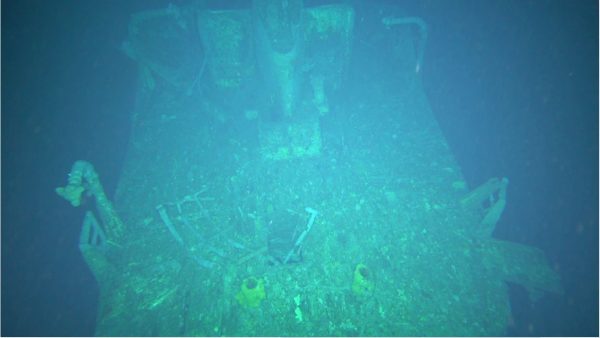An investigation by CSIRO research vessel (RV) Investigator has confirmed the location of the wreck of the MV Blythe Star.
The 44-metre motor vessel (MV) Blythe Star was a coastal freighter that disappeared off Tasmania nearly 50 years ago. The vessel was travelling from Hobart to King Island when, on 13 October 1973, it suddenly capsized and sank off the southwest coast of Tasmania. All 10 crew members were able to escape the sinking vessel into an inflatable life raft. Tragically, three crew members died before the survivors were able to find help and be rescued 12 days later on 24 October 1973.
The disappearance of the MV Blythe Star sparked the largest maritime search ever conducted in Australia to that time. No trace of the vessel was ever found by the searchers.
The location of the MV Blythe Star was confirmed by RV Investigator on 12 April 2023 during a 38-day research voyage to study a submarine (underwater) landslide off the west coast of Tasmania. This voyage, which was led by the University of Tasmania, included a ‘piggyback’ project to investigate an unidentified shipwreck which had been pinpointed by fishing vessels and previous seafloor surveys in the region. Piggyback projects use resources already allocated to a voyage to collect additional useful or important data for national benefit.

The investigation by RV Investigator involved the systematic mapping of the unidentified shipwreck using multibeam echosounders and then a visual inspection using two underwater camera systems. The mapping data and video imagery collected by RV Investigator was able to confirm that the shipwreck was the MV Blythe Star.
The wreck of the MV Blythe Star is located approximately 10.5 kilometres west of South West Cape, Tasmania and lies in 150 metres of water. The investigation showed the vessel is intact and sitting upright on the seafloor, with its bow pointing northwest. The visual inspection using the underwater cameras was able to identify key features to confirm the wreck was the MV Blythe Star. This included identifying part of the vessel name – ‘STAR’ – on the ship’s bow.
The wreck was covered with a minimal growth of algae and seaweed, and some structures showed signs of damage, particularly on the stern. Most notably, the vessel’s wheelhouse is no longer present. Various marine life was observed on and around the wreck including crayfish, schools of fish and several fur seals, which were filmed swimming around the wreck.
The data from the project have been provided to state and national maritime heritage agencies as part of the reporting process for the Australasian Underwater Cultural Heritage Database (AUCHD). It’s hoped that the mapping and video footage gathered may provide additional information to help answer questions about what caused the vessel to sink.
In the aftermath of the MV Blythe Star tragedy, reviews of the incident would directly lead to important changes in maritime safety laws in Australia to significantly improve safety at sea for future mariners.

The outcomes of the project have been shared with key stakeholders including members of the Blythe Star Memorial Group, which will hold an event in Hobart during October this year to commemorate the 50th anniversary of the tragedy.
CSIRO is pleased to be able to assist in providing closure to this 50-year mystery and confirm the final resting place of the MV Blythe Star.
RV Investigator is part of the Marine National Facility, national research infrastructure operated by CSIRO, Australia’s national science agency, on behalf of the nation.
Additional media assets (images and b-roll).